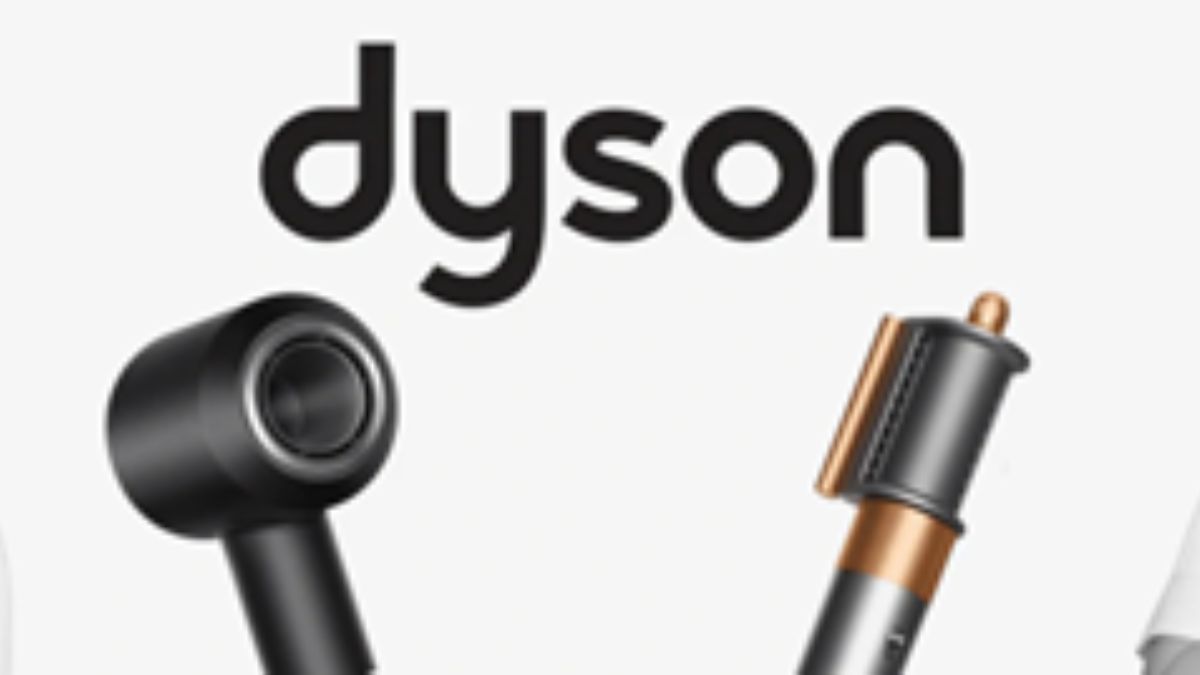Managed Uniform Programs, Employee uniforms play a crucial role in establishing brand identity, ensuring workplace safety, and maintaining professional standards. However, traditional uniform management often burdens businesses with complex logistics, inventory challenges, and administrative overhead. Enter the managed uniform program—a comprehensive solution that transforms how organizations handle their uniform needs.
Managed uniform programs have become essential for businesses seeking operational efficiency without compromising on quality or brand consistency. From healthcare facilities requiring strict compliance standards to hospitality companies prioritizing customer-facing professionalism, organizations across industries are discovering the transformative power of outsourced uniform management.
This guide explores everything you need to know about implementing a managed uniform program, from understanding core components to measuring long-term success. Whether you’re evaluating your current uniform management approach or preparing to launch a new program, you’ll find actionable insights to make informed decisions for your organization.
What is a Managed Uniform Program?
A managed uniform program is a comprehensive service where a third-party provider handles every aspect of uniform management for your organization. Unlike traditional approaches where businesses purchase uniforms outright and manage them internally, managed programs transfer responsibility to specialized vendors who bring expertise, technology, and economies of scale.
The program encompasses five key components that work together seamlessly. Uniform selection involves collaborating with experts to choose appropriate styles, materials, and branding elements that align with your company’s needs and industry requirements. The ordering process becomes streamlined through dedicated portals where employees can request new uniforms or replacements with minimal administrative burden.
Distribution represents another critical element, with providers coordinating delivery directly to employees or centralized locations based on your preferences. Maintenance services often include cleaning, repair, and replacement scheduling to ensure uniforms remain in optimal condition throughout their lifecycle. Finally, responsible disposal ensures worn-out uniforms are recycled or disposed of according to environmental and security standards.
This approach contrasts sharply with traditional uniform management, where internal teams juggle vendor relationships, inventory tracking, size management, and quality control alongside their primary responsibilities. Managed programs eliminate these burdens while typically delivering superior results through specialized focus and advanced systems.
Benefits of Managed Uniform Programs
Cost Savings
Managed uniform programs deliver significant financial advantages through multiple channels. Bulk purchasing power enables providers to negotiate better pricing on uniforms, accessories, and services than individual businesses could achieve independently. These savings often offset service fees while delivering net cost reductions.
Administrative expense reduction represents another major benefit. Internal staff no longer spend time managing vendor relationships, processing orders, tracking inventory, or handling employee uniform requests. This freed capacity allows teams to focus on revenue-generating activities or strategic initiatives that drive business growth.
Efficient inventory management minimizes waste through accurate demand forecasting and just-in-time distribution. Providers use historical data and predictive analytics to maintain optimal stock levels, reducing excess inventory costs while preventing shortages that disrupt operations.
Improved Efficiency
Streamlined processes eliminate bottlenecks that plague traditional uniform management. Employees access user-friendly online portals to request uniforms, check order status, and manage their accounts without involving HR or procurement teams. Automated systems handle routine tasks like reordering, size tracking, and delivery scheduling.
Advanced inventory tracking provides real-time visibility into uniform distribution, usage patterns, and replacement needs. Managers receive detailed reports highlighting program performance, cost metrics, and optimization opportunities. This data-driven approach enables continuous improvement while reducing manual oversight requirements.
The reduced burden on internal staff creates ripple effects throughout the organization. HR teams can focus on strategic talent management instead of uniform logistics. Procurement departments handle fewer low-value transactions, improving their efficiency ratios. Operations managers spend less time addressing uniform-related employee concerns.
Enhanced Brand Image
Consistent employee appearance strengthens brand recognition and professional credibility. Managed programs ensure uniforms meet quality standards and maintain consistent branding across all locations and departments. Professional laundering and maintenance services keep uniforms looking fresh and presentable.
Brand identity reinforcement occurs through carefully coordinated uniform design that incorporates company colors, logos, and styling elements. Providers offer design expertise to create uniforms that effectively communicate your brand values while meeting functional requirements.
Customer perception improves when employees present a polished, professional appearance. Studies consistently show that well-dressed employees inspire greater confidence in service quality and company competence. This enhanced perception can translate into increased sales, customer loyalty, and competitive advantages.
Increased Employee Satisfaction
Convenient access to high-quality uniforms reduces friction in the employee experience. Workers appreciate not having to navigate complex ordering processes or wait for approvals. Direct distribution to home addresses or convenient pickup locations eliminates additional steps that consume personal time.
Professional sizing services ensure proper fit and comfort. Many providers offer on-site fitting sessions or detailed sizing guides to minimize exchanges and returns. Well-fitting uniforms improve employee comfort throughout their shifts while presenting a more professional appearance.
Stress reduction occurs when employees no longer worry about uniform maintenance, replacement, or compliance. Clear policies, easy ordering processes, and reliable service delivery create peace of mind that allows workers to focus on their primary responsibilities.
Compliance and Safety
Industry-specific safety standards require specialized knowledge and ongoing monitoring. Managed uniform programs ensure uniforms meet relevant regulations for flame resistance, visibility, chemical protection, or other requirements. Providers stay current with changing standards and proactively update uniform specifications.
Lifecycle tracking enables proactive replacement before uniforms lose protective properties or professional appearance. Automated systems monitor usage patterns and recommend replacement schedules based on safety requirements and quality standards.
Regulatory adherence becomes more reliable when managed by specialists who understand compliance obligations. Providers maintain documentation, conduct regular audits, and implement corrective actions to prevent violations that could result in fines or safety incidents.
Implementing a Managed Uniform Program
Needs Assessment
Successful implementation begins with thorough analysis of your organization’s uniform requirements. Different roles and departments may need distinct uniform specifications based on safety requirements, customer interaction levels, and functional needs. Manufacturing employees might need flame-resistant materials, while customer service representatives require professional business attire.
Budget considerations encompass both direct program costs and indirect savings from improved efficiency. Timeline constraints should account for vendor selection, program design, employee communication, and rollout phases. Most implementations require 3-6 months from initiation to full deployment.
Employee feedback provides valuable insights into current uniform challenges and preferences. Surveys, focus groups, and informal discussions reveal pain points with existing arrangements and priorities for improvement. This input helps shape program design and builds employee buy-in for the transition.
Vendor Selection
Research potential providers by evaluating their industry experience, client portfolio, and service capabilities. Look for vendors with expertise in your sector who understand specific requirements and compliance standards. Review case studies and client testimonials to assess their track record of successful implementations.
Key evaluation factors include product quality, pricing transparency, technology platforms, and service level commitments. Request product samples to assess uniform quality and durability. Evaluate ordering systems for user-friendliness and functionality. Compare pricing structures to understand total cost implications.
Proposal requests should specify your requirements in detail to enable accurate comparisons. Include information about employee counts, uniform types, distribution preferences, and performance expectations. Request references from similar clients and consider conducting site visits to observe their operations firsthand.
Program Design
Uniform selection balances brand requirements, employee preferences, and functional needs. Collaborate with providers to choose styles, colors, and materials that align with your company image while meeting comfort and durability expectations. Consider seasonal variations and role-specific requirements during the design phase.
Ordering and distribution procedures should minimize administrative burden while ensuring reliable service. Establish clear policies for initial orders, replacements, and special requests. Define distribution methods, delivery schedules, and quality control processes to maintain consistent service levels.
Inventory management systems should provide real-time visibility into program performance. Set up reporting dashboards that track key metrics like order fulfillment rates, employee satisfaction, and cost per uniform. Establish regular review processes to identify optimization opportunities and address emerging issues.
Communication and Training
Employee communication campaigns should highlight program benefits and address potential concerns. Use multiple channels including emails, meetings, and intranet announcements to reach all affected employees. Provide clear timelines for implementation phases and expectations for employee participation.
Training sessions should cover ordering procedures, proper uniform care, and maintenance requirements. Develop user guides and quick reference materials for ongoing support. Establish help desk or support channels to address questions and resolve issues promptly.
Feedback mechanisms enable continuous improvement and demonstrate responsiveness to employee concerns. Create channels for suggestions, complaints, and compliments. Regular pulse surveys can track satisfaction levels and identify areas needing attention.
Monitoring and Optimization
Performance tracking should focus on metrics that align with program objectives. Monitor cost per employee, order fulfillment times, employee satisfaction scores, and compliance rates. Compare results against baseline measurements to quantify program impact.
Regular feedback collection from employees, managers, and stakeholders provides insights for improvement. Conduct quarterly reviews to assess program performance and identify enhancement opportunities. Address issues promptly to maintain program effectiveness and employee satisfaction.
Continuous optimization involves adjusting program elements based on performance data and feedback. This might include modifying uniform selections, revising ordering procedures, or enhancing communication processes. Successful programs evolve to meet changing organizational needs and opportunities for improvement.
Case Studies
A major healthcare system implemented a managed uniform program across 15 facilities, serving 8,000 employees. The previous system required each facility to manage its own uniform procurement, creating inconsistent quality and significant administrative overhead. The managed program standardized uniform specifications while reducing costs by 23% through consolidated purchasing power.
Implementation included comprehensive sizing sessions at each facility and training for employees on the new ordering system. The provider established distribution centers strategically located to ensure next-day delivery for standard orders. Advanced inventory management prevented stockouts while minimizing excess inventory costs.
Results exceeded expectations across multiple dimensions. Administrative time savings enabled HR staff to focus on strategic initiatives, while consistent professional appearance improved patient satisfaction scores. Employee satisfaction with uniform quality and ordering convenience increased by 35%, and compliance with infection control standards improved through better laundering and maintenance services.
A national retail chain with 200 locations faced challenges maintaining brand consistency across diverse markets. Regional managers often selected different uniform suppliers, resulting in variations in color, style, and quality that diluted brand identity. Customer feedback indicated that inconsistent employee appearance affected perceptions of service quality and professionalism.
The managed uniform program established standardized specifications while maintaining flexibility for regional climate differences. A centralized ordering system enabled consistent quality control while simplifying procurement processes. The provider’s national distribution network ensured reliable service across all markets.
Quantifiable improvements included 18% cost reduction through consolidated purchasing and streamlined processes. Brand consistency scores improved by 42% based on mystery shopper evaluations. Employee turnover decreased by 12% in locations where uniform quality and convenience improved most significantly, suggesting strong correlation between uniform satisfaction and retention.
Challenges and Solutions
Resistance to change represents the most common implementation challenge. Employees may prefer familiar suppliers or fear disruption during transition periods. Address resistance through comprehensive communication highlighting personal benefits like improved convenience and uniform quality. Involve employee representatives in program design to build ownership and advocacy.
Sizing discrepancies can create frustration and additional costs if not managed properly. Partner with providers who offer professional sizing services and comprehensive size exchange programs. Maintain detailed sizing records to facilitate future orders and minimize errors. Consider on-site fitting events for initial program rollouts.
Supply chain disruptions can affect program reliability, particularly for specialized uniforms or during peak demand periods. Select providers with diversified supplier networks and inventory buffers. Establish contingency plans for emergency situations and communicate proactively about potential delays. Consider maintaining limited safety stock for critical roles.
Budget constraints may limit program scope or service levels. Focus on high-impact areas first and expand gradually as benefits become evident. Quantify savings from reduced administrative overhead and improved efficiency to offset program costs. Consider phased implementation to spread costs across multiple budget cycles.
Technology integration challenges can complicate order processing and reporting. Ensure provider systems integrate with your existing HR or procurement platforms. Test all interfaces thoroughly before full deployment. Provide comprehensive training on new systems and maintain support resources during transition periods.
The Future of Managed Uniform Programs
Sustainability initiatives are reshaping uniform program expectations. Organizations increasingly demand eco-friendly materials, responsible manufacturing practices, and circular economy approaches to uniform lifecycle management. Providers are responding with recycled fabric options, take-back programs, and carbon footprint reduction initiatives.
Technology integration continues expanding program capabilities. RFID tracking enables precise inventory management and usage monitoring. Mobile applications improve ordering convenience and employee engagement. Artificial intelligence optimizes inventory levels and predicts replacement needs with increasing accuracy.
Personalization trends are driving demand for customization options within standardized programs. Employees want choices in styles, fits, and accessories while maintaining brand consistency. Advanced manufacturing techniques enable cost-effective personalization that was previously prohibitively expensive.
Remote workforce management creates new challenges and opportunities. Distributed teams need uniform distribution to home offices and various work locations. Virtual sizing technologies and try-before-you-buy programs address fitting challenges when employees work remotely.
Data analytics capabilities are becoming more sophisticated, providing deeper insights into program performance and optimization opportunities. Predictive analytics identify trends before they become problems. Benchmark comparisons help organizations understand their performance relative to industry standards.
Take the Next Step Toward Uniform Management Excellence
Managed uniform programs represent a strategic opportunity to reduce costs, improve efficiency, and enhance your organization’s professional image. The benefits extend far beyond simple cost savings to encompass employee satisfaction, brand consistency, and operational excellence.
Successful implementation requires careful planning, stakeholder engagement, and ongoing optimization. Organizations that approach managed uniform programs strategically often discover benefits beyond their initial expectations, from improved employee retention to enhanced customer perceptions.
Consider conducting a comprehensive assessment of your current uniform management approach. Identify pain points, quantify costs, and evaluate how a managed program could address your specific challenges. Connect with experienced providers to explore options and develop a business case for your organization.
The investment in professional uniform management pays dividends through improved efficiency, cost control, and brand presentation. Your employees, customers, and bottom line will all benefit from the transformation.
Conclusion
Managed Uniform Programs, Implementing a professional uniform management program is a strategic decision that drives meaningful results for your organization. By streamlining processes, controlling costs, and enhancing your brand image, you create a more consistent and efficient operation. Partnering with the right providers ensures a seamless transition and enables long-term success. Take the next step toward optimizing your uniform strategy and unlocking the full potential of your business.






